Higher classification Cydalima | Scientific name Cydalima perspectalis Rank Species | |
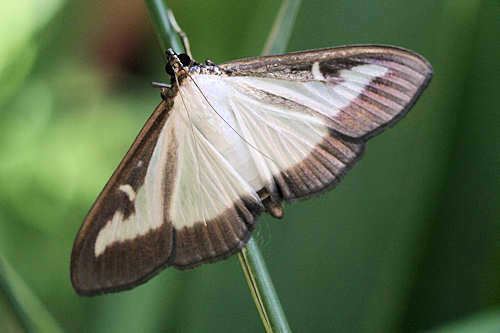 | ||
Similar Cydalima, Butterflies and moths, Buxus sempervirens, Insect, Box | ||
Buchsbaumz nsler cydalima perspectalis
Cydalima perspectalis or the box tree moth is a species of moth of the family Crambidae. It is native to eastern Asia (Japan, China, Taiwan, Korea, the Russian Far East and India). It is an introduced species in Europe, first recorded in Germany in 2006, and subsequently in Switzerland and the Netherlands in 2007, Great Britain in 2008, France and Austria in 2009, Hungary in 2011, Romania and Turkey. It is also known from Slovakia, Belgium and Croatia. During the preparation to the 2014 Olympics in 2012 it was introduced from Italy to Sochi with the planting stock of Buxus sempervirens and in the next year it began to defoliate Buxus colchica in large quantities. In 2013 it was found new to Denmark at several sites in the island of Sjælland.
Contents
- Buchsbaumz nsler cydalima perspectalis
- Cydalima perspectalis gdoremi altervista org
- Biology
- Description
- Cycle
- Host plant
- Natural regulation or predation
- Control measures
- References
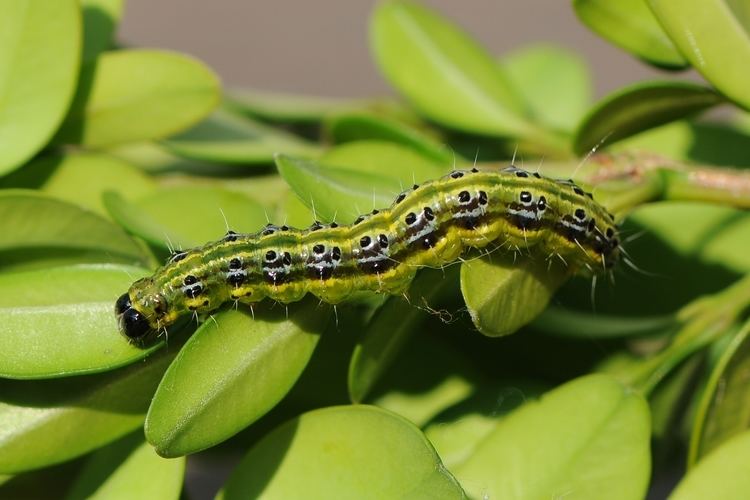
Cydalima perspectalis gdoremi altervista org
Biology
The species was first described by Francis Walker in 1859.
Description
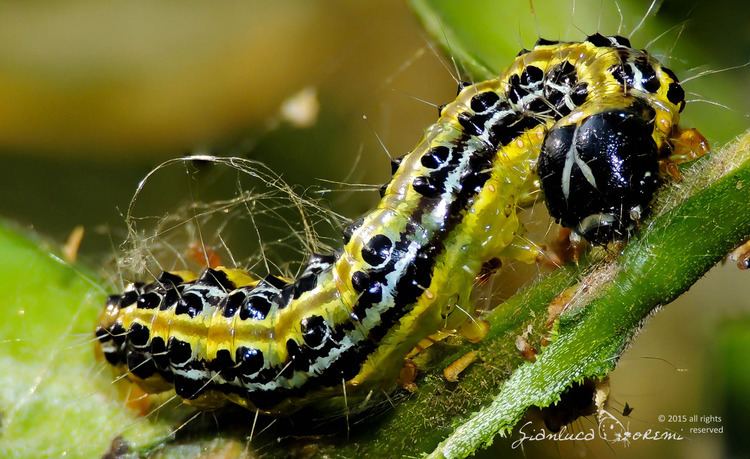
Eggs are 1 mm in diameter, located under green unattacked leaves. First larvae just coming out from the egg are about 1–2 mm long. Larvae development brings them in four weeks to about 35–40 mm at maximum. There is some shrinkage at the beginning of the nymphosis, pupae are 25–30 mm long, first green with browning longitudinal lines, then more and more brownish. The wingspan of the adult form is 40–45 mm. Two variants are observed, the most common one is mostly white while the other is most entirely light brown.
Cycle

There are two or three generations per year with adults on the wing from April/May to September.. In the warmest parts of the European importation area, with cold conditions coming late in the year, there might be sometimes four generations per year. The species overwinters as a juvenile cocooned larva (about 5–10 mm long), protected in an hibernarium made of two leaving buxus leaves solidly joined by silk.
Host plant
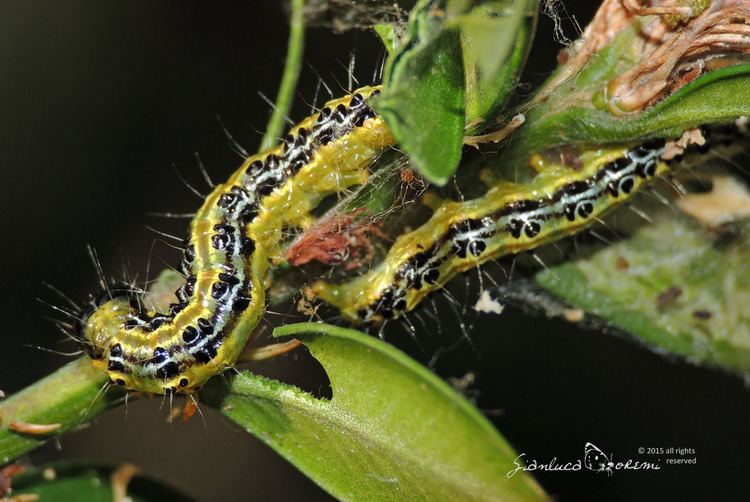
The larvae feed on the leaves and shoots of Buxus species. Young larvae only eat the upper part of the leaf, leaving the hardest inside structure. The leaves are not destroyed completely but appear as "pealed" in small parallel beats lines, or almost completely. These pealed leaves eventually die. Old larvae are the most damaging: they massively and completely eat the leaves, sometimes leaving a thin part at the contour and centre of the leaf, however. Green ball-shaped frass can usually be seen on host plants.
Natural regulation or predation
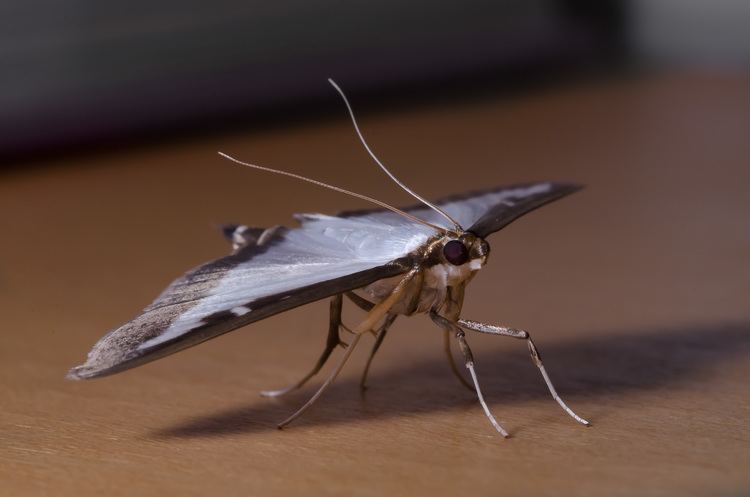
In the area of origin (Asia) natural regulation occurs, as witnessed by the non-destructive behavior of C. perspectalis. In the area of Europe where the moth has been introduced, the damage is very serious because natural regulation does not occur at a significant level. However, in European areas where the Asian hornet (Vespa velutina) is present prior to the introduction of C. perspectalis, some degree of predation by the wasp is observed. This is namely in the south-west of France, the first place where V. velutina was introduced to Europe in 2004 (C. perspectalis invaded this area in 2012). V. velutina is able to capture small larvae, and larvae preparing for the nymphosis in their cocoon. Where V. velutina has been introduced this causes other problems as preys on honey bees and European honey bees are more vulnerable than their Asian counterparts.
Control measures
Synthetic insecticides (cypermethrin, deltamethrin) are efficient but must be thoroughly applied inside the bush, and under leaves. Similar natural pyrethroid insecticides, extracted from Chrysanthemum and mixed with colza oil, can also be used. The application of these insecticides must be done in the evening in areas where domestic bees or useful insects are present, to minimize the impact on these species.
Bacillus thuringiensis is a bacterium which produces an insect-specific endotoxin which perforates the caterpillars' gut lining, leading to paralysis and death.
Nematodes also have an action on the digestive system of larvae.
Pheromone traps (attracting adult males) are able to prevent impregnation of adult females and therefore control the severity of the damage. A more important proportion of sterile eggs is deposited by adult females. The selectivity of the pheromone is very good and useful indigenous species are not attracted.
Insecticide, Bacillus and nematode treatments must be repeated three times at an interval of about ten days, because they mostly affect young larvae.
Pheromone traps must be in place from March–April to October–November.
